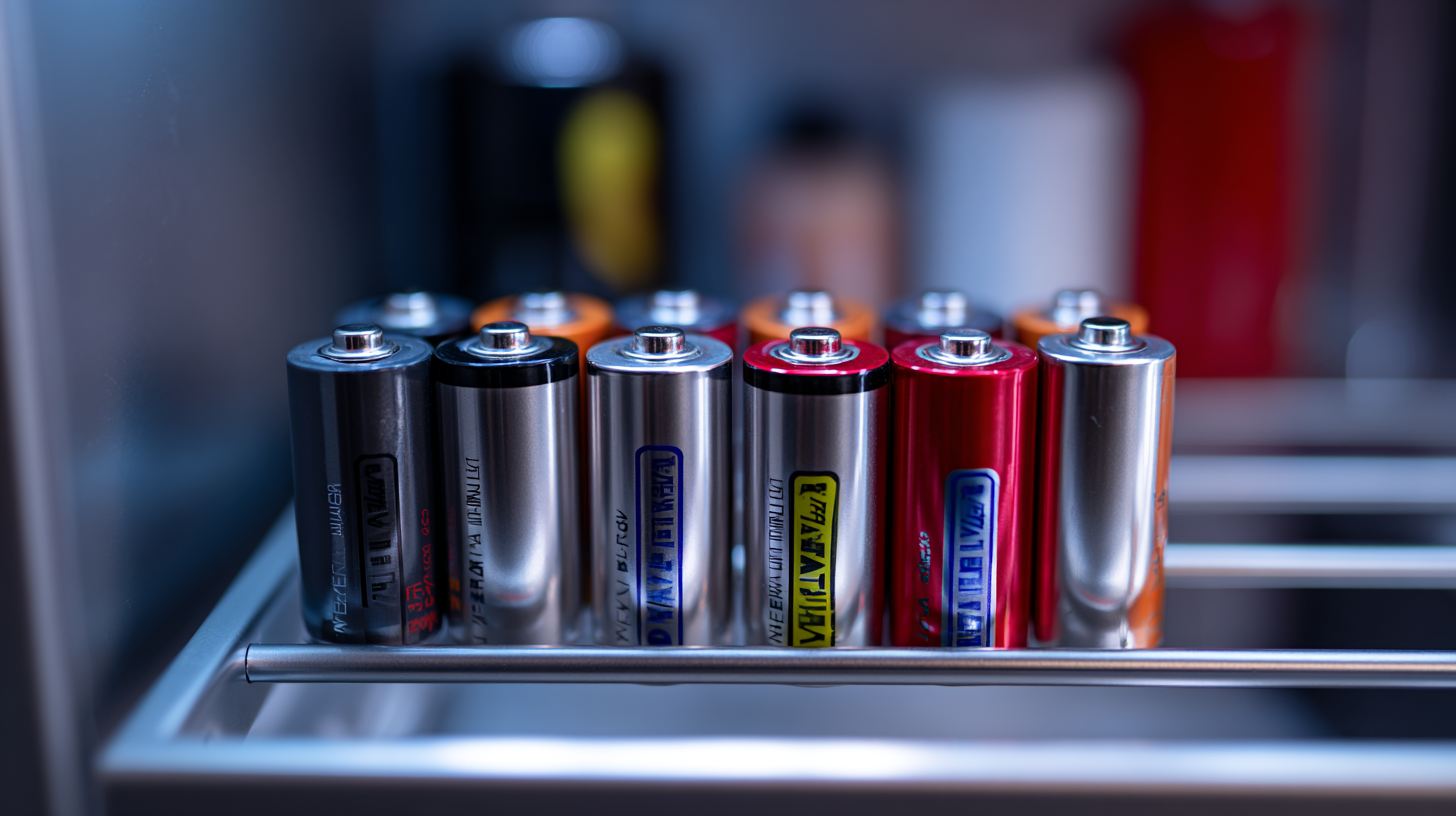In today's rapidly evolving energy landscape, selecting the right Battery Polymer Lithium is crucial for optimizing performance and efficiency across various applications, from electric vehicles to renewable energy storage. According to a recent report by MarketsandMarkets, the global lithium-ion battery market is projected to reach $129 billion by 2027, with polymer lithium batteries gaining significant traction due to their lightweight nature and higher energy density. Additionally, the demand for energy storage solutions in residential and commercial settings is expected to rise, further elevating the importance of choosing the appropriate battery technology. This blog aims to guide consumers through the essential factors to consider when selecting the best Battery Polymer Lithium, ensuring that their energy needs are met effectively and sustainably.

When selecting a battery polymer lithium for your energy applications, several critical factors come into play. First and foremost, consider the energy density of the battery. Higher energy density means longer-lasting performance in a compact form, which is vital for applications ranging from consumer electronics to electric vehicles. Assessing the voltage range is also essential; the optimal voltage ensures that the battery can efficiently meet the power requirements of your devices.
Another crucial factor is the thermal stability of the polymer lithium battery. Reliable performance across varying temperatures helps maintain efficiency and longevity, especially in applications subject to extreme conditions. Additionally, evaluate the cycle life—the number of charge and discharge cycles a battery can withstand before its capacity significantly declines. A battery with a longer cycle life will provide better value and reduced maintenance costs in the long term. Finally, compatibility with your existing systems and ease of integration should guide your selection to ensure seamless operation and maximum performance.
When selecting a polymer lithium battery, understanding cycle life is crucial for determining longevity and overall performance. Cycle life refers to the number of complete charge-discharge cycles a battery can undergo before its capacity significantly diminishes. Polymer lithium batteries typically offer varied cycle lives, influenced by factors such as chemical composition, manufacturing process, and usage conditions. Evaluating these aspects is essential for anyone looking to invest in a reliable energy solution.
In comparative evaluations, some polymer lithium batteries boast impressive cycle lives, often exceeding 500 to 1,000 cycles under optimal conditions. However, real-world performance can differ based on factors such as depth of discharge, operating temperature, and charging protocols. Understanding these nuances allows consumers to make informed decisions tailored to their specific applications, from electric vehicles to portable electronics. Therefore, when choosing a polymer lithium battery, it is vital to weigh the rated cycle life against your energy needs and expected usage patterns, ensuring a balance between performance and longevity.
When selecting the best battery polymer lithium for your energy needs, it is crucial to understand the concept of energy density, which plays a significant role in determining the capacity and efficiency of different lithium technologies. Energy density refers to the amount of energy stored in a given volume or mass of the battery. Higher energy density translates to longer-lasting power and reduced weight, making it a vital factor for applications ranging from portable electronics to electric vehicles.
Different lithium battery technologies offer varying capacity ratings based on their energy densities. For instance, lithium-ion batteries typically provide a higher energy density compared to traditional lead-acid batteries, allowing for smaller and lighter designs without sacrificing performance. Among the various types of lithium batteries, lithium polymer batteries stand out due to their flexibility in design and safety features. They often have a lower energy density than their lithium-ion counterparts but excel in applications where weight and shape flexibility are critical, such as in drones and wearables. Understanding these differences is essential when choosing the right battery technology to meet specific energy requirements.
When selecting the best battery polymer lithium for your energy needs, a thorough cost analysis becomes essential. According to a report by ResearchAndMarkets, the global lithium-ion battery market is projected to reach $100 billion by 2025, reflecting a growing demand that also affects pricing strategies. It’s crucial to assess both the initial investment and the long-term operational costs associated with different battery types. For example, while high-performance lithium polymer batteries might come with a higher upfront cost, their efficiency and longevity often provide better value over time.
Another critical consideration is the trade-off between performance and price. A study published in the Journal of Energy Storage indicates that battery efficiency can vary significantly based on chemical formulation and design. For instance, polymer lithium batteries typically offer faster charging times and lighter weights, making them ideal for applications such as electric vehicles and portable electronics. However, models with higher energy density, while more expensive, can lead to a more optimized system overall, reducing the need for frequent replacements and minimizing downtime in operations. Balancing these factors is key to making an informed decision that aligns with your specific energy requirements and budget constraints.

When selecting a battery polymer lithium solution, understanding safety standards and certifications is paramount. In an industry where the energy density and cycle life of batteries are improving rapidly, safety cannot be overlooked. The International Electrotechnical Commission (IEC) and Underwriters Laboratories (UL) have established rigorous safety standards for lithium batteries, including the IEC 62133 and UL 2054 standards, which focus on preventing thermal runaway and ensuring mechanical safety. According to a report by the National Renewable Energy Laboratory, batteries that meet these certifications are 40% less likely to experience safety-related incidents, which is a crucial factor for both consumer and industrial applications.

Moreover, certifications can also influence market performance and consumer trust. A recent study published by MarketsandMarkets reveals that nearly 70% of consumers prioritize safety certifications while choosing a battery product. This trend emphasizes the importance of compliance with safety standards not only for the reliability of the products but also for the brand reputation. Brands showcasing comprehensive safety certifications can potentially increase their market share, as customers feel more secure in their purchases. Consequently, as technology evolves, adherence to updated regulations and standards will be a key factor for manufacturers striving to deliver reliable and safe polymer lithium batteries to meet growing energy demands.


